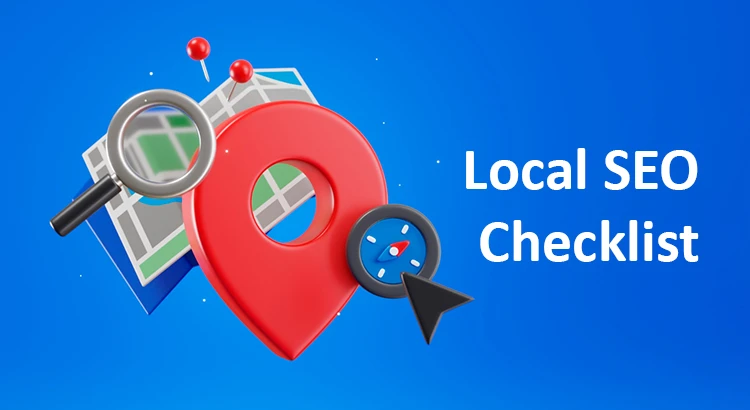Following a well-structured local SEO checklist can significantly boost your site’s visibility within your target community. These local SEO tips are designed to enhance your online presence and help nearby customers find your business more easily. Optimizing your site for geographic relevance can lead to more traffic, higher conversions, and better local engagement.
Effective Local SEO Checklist
To strengthen your online presence in SERPs, you’ll need a practical mix of location-based techniques. Below are key steps to help you make your website more discoverable to nearby customers and improve its overall performance in search.
1. Set Up Your Google Business Profile
Create a Google Business Profile (GBP) to make your business eligible for Google’s map-based listings. This is one of the most crucial location-focused tactics because many users rely on map results to discover services near them.
Start by adding or claiming your business on the GBP platform and complete the verification process. Then fill in your profile with accurate, comprehensive information, so potential customers have everything they need to contact or visit you.
2. Manage Your Online Reviews
Online reviews can play a big role in shaping public perception and driving conversions. Begin by adding your business to trusted review platforms and updating your current listings where necessary.
By actively managing feedback, responding to customer comments, and encouraging reviews from satisfied clients, you not only improve trust but also increase your brand’s visibility across the web.
3. Build Local Citations
Citations—mentions of your business name, address, and phone number (NAP)—help search engines verify your location and boost credibility. Adding these details across relevant, high-quality sites can improve how often your business appears in SERPs.
You can expand your presence by listing your NAP on:
- Business directories like Yelp, Bing, and Apple Maps
- Social media profiles
- Customer review platforms such as Trustpilot or Tripadvisor
- Local blogs and community websites
- Industry-specific platforms that relate to your services
4. Acquire Local Backlinks
Links from nearby websites can strengthen your domain authority and support your ranking efforts. These links not only drive direct traffic but also signal to search engines that your business is relevant to the area.
Here are some ideas to earn location-based links:
- Host events and get them listed on regional event calendars
- Write testimonials for suppliers who may link back to your site
- Invite local writers to cover your services
- Sponsor local teams or organizations in exchange for links
- Enter business award contests in your city
- List job openings on area-specific job boards
- Share press releases with local media outlets
- Find mentions of your brand without a link and ask for attribution
5. Improve Your On-Page Optimization
Refining individual pages on your site helps them perform better in SERPs. Start by identifying keywords that people in your area are using.
You can:
- Review existing keyword performance using Google Search Console
- Explore autocomplete suggestions in Google Search
- Check related search queries
- Use keyword research tools
- Analyze which terms competitors are ranking for
After selecting a primary keyword for each page, incorporate it naturally into:
- Title tags
- Meta descriptions
- H1 headings
- URL slugs
- The first paragraph of text
You can also use supporting terms throughout the content where appropriate.
6. Add NAP Information to Your Website
Display your business name, address, and phone number prominently on your website. This helps both visitors and search engines recognize your physical location.
Consider creating a “Contact” or “Visit Us” page that includes:
- Your full contact information
- Hours of operation
- Quality images of your storefront
- An embedded map of your location
- Other relevant details (refer to your Google Business Profile for inspiration)
If your business operates in multiple locations, create a separate page for each and link them within your main menu or footer.
7. Add Local Business Structured Data to Your Website
Structured data is a type of code that helps search engines better understand the content on your site. By marking up your business details, you improve how your information is displayed in SERPs.
Use Google’s Structured Data Markup Helper to tag important details like your business name, address, and operating hours. Once the markup is created, choose your preferred format—JSON-LD or microdata—and insert it into your site’s code. If you’re unsure how to do this, consult a developer for assistance.
8. Run a Technical Site Audit
A technical audit uncovers backend issues that might prevent your site from performing well in SERPs. Start by setting up Google Search Console, a free tool that provides insights into your site’s visibility.
Use it to review key reports:
- Indexing status to see which pages are visible to Google
- Core Web Vitals to check speed and user experience
- HTTPS report to ensure your site uses secure protocols
- Manual actions to identify penalties
- Security issues for malware or hacking alerts
- Sitemaps to verify that your most important pages are being submitted correctly
Fixing technical errors can make a measurable difference in your site’s performance.
9. Monitor Your Local Search Engine Optimization Results
Keep track of your local visibility efforts to understand what’s working and where there’s room for improvement. Monitor changes in search performance, website traffic, call volume, and customer inquiries.
Reviewing this data regularly helps guide future optimization efforts and ensures your online presence continues to align with local search intent.
Wrapping Up
Improving your local visibility takes a focused, consistent approach. By following these location-based techniques, you can strengthen your presence in SERPs. Staying on top of technical performance and tracking your results will help your business remain competitive and easily discoverable by the people who matter most—your local audience.


